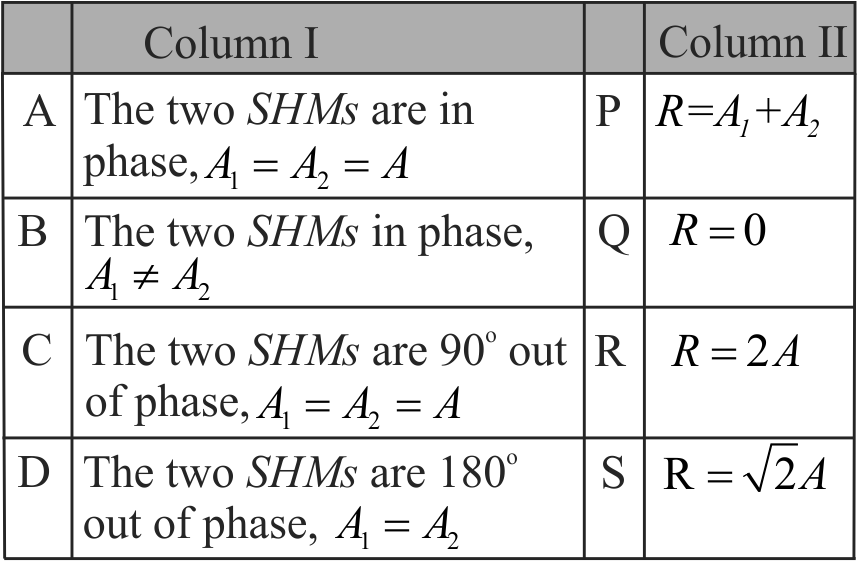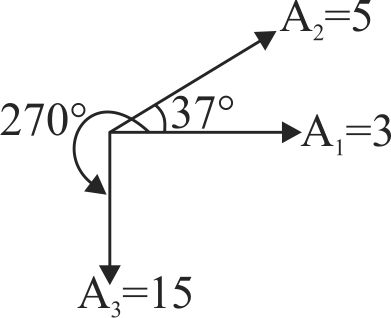364520
Consider two SHMs along the same straight line \(x_{1}=A_{1} \sin \left(\omega t+\phi_{1}\right), x_{2}=A_{2} \sin \left(\omega t+\phi_{2}\right)\), where \(A_{1}\) and \(A_{2}\) are their amplitudes and \(\phi_{1}\) and \(\phi_{2}\) are their initial phase angle. If the two SHMs meet simultaneously and ' \(R\) ' is the resultant amplitude, match column I with column II.
364520
Consider two SHMs along the same straight line \(x_{1}=A_{1} \sin \left(\omega t+\phi_{1}\right), x_{2}=A_{2} \sin \left(\omega t+\phi_{2}\right)\), where \(A_{1}\) and \(A_{2}\) are their amplitudes and \(\phi_{1}\) and \(\phi_{2}\) are their initial phase angle. If the two SHMs meet simultaneously and ' \(R\) ' is the resultant amplitude, match column I with column II.
364520
Consider two SHMs along the same straight line \(x_{1}=A_{1} \sin \left(\omega t+\phi_{1}\right), x_{2}=A_{2} \sin \left(\omega t+\phi_{2}\right)\), where \(A_{1}\) and \(A_{2}\) are their amplitudes and \(\phi_{1}\) and \(\phi_{2}\) are their initial phase angle. If the two SHMs meet simultaneously and ' \(R\) ' is the resultant amplitude, match column I with column II.
364520
Consider two SHMs along the same straight line \(x_{1}=A_{1} \sin \left(\omega t+\phi_{1}\right), x_{2}=A_{2} \sin \left(\omega t+\phi_{2}\right)\), where \(A_{1}\) and \(A_{2}\) are their amplitudes and \(\phi_{1}\) and \(\phi_{2}\) are their initial phase angle. If the two SHMs meet simultaneously and ' \(R\) ' is the resultant amplitude, match column I with column II.

